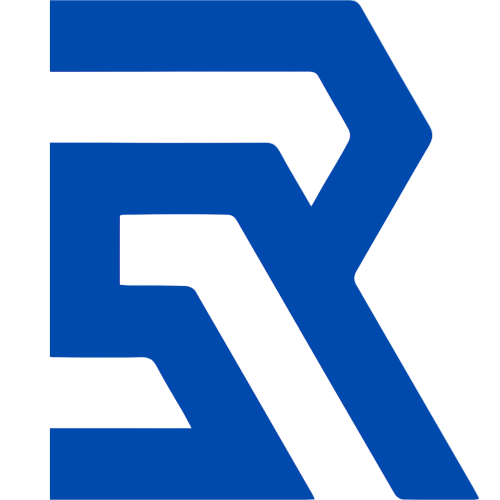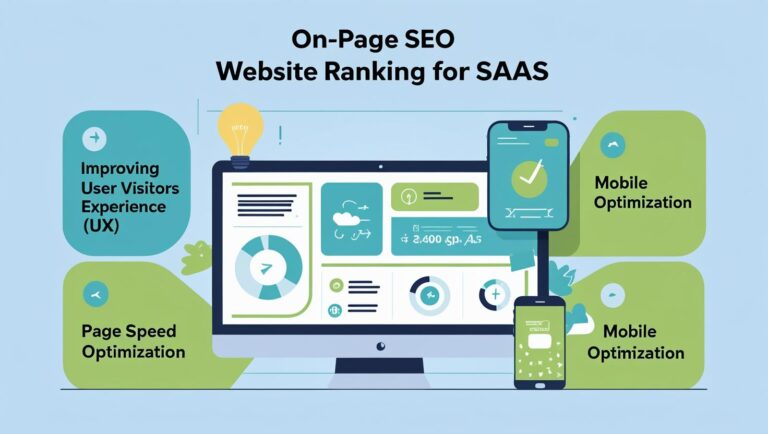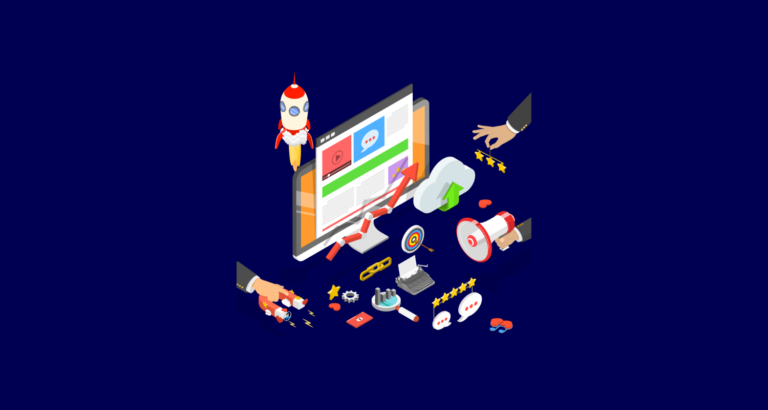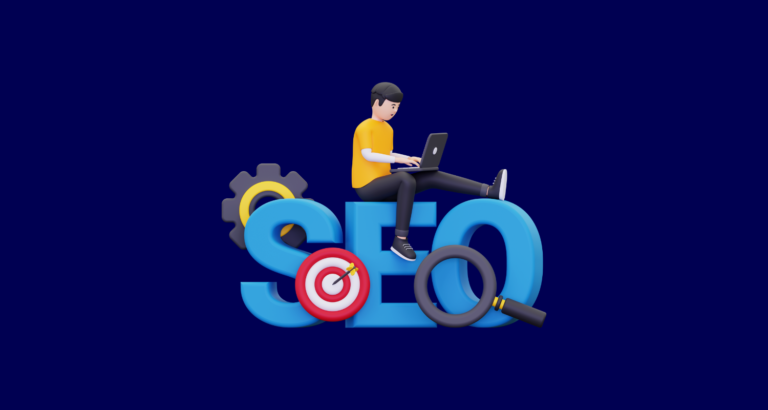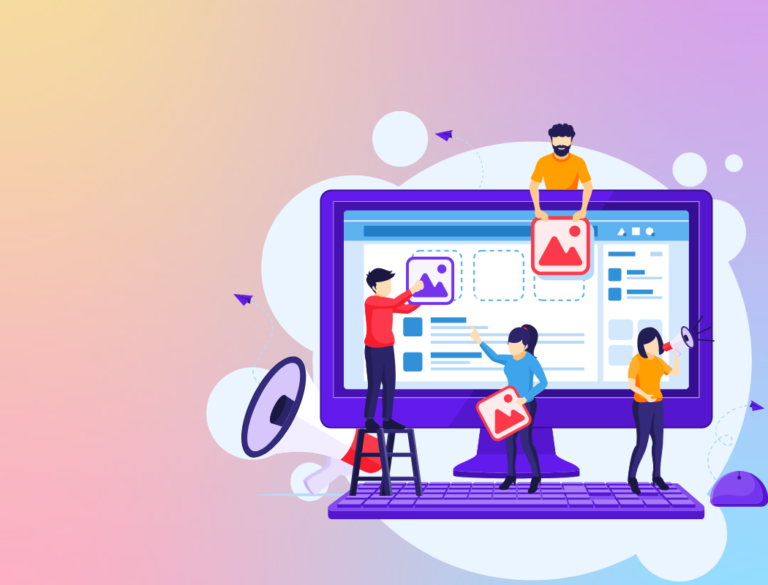Technical SEO for SaaS
In the cutthroat business environment that defines SaaS, nothing is more critical than visibility. Proper technical optimization is as fundamental as an appealing design and engaging content, but all these efforts are wasted if search engines cannot index, crawl, and, therefore, rank your website. That is where technical SEO comes to the rescue and assists in making the process a success. Technical SEO for SaaS in simple terms means enhancing all the obscure aspects of your web pages to help search engines diagnose and index your content hence improving organic traffic. It exists to create a strong base for your online image.
Here in this guide, we shall look at everything ranging from site speed (nobody wants to be on a slow site) and mobile responsiveness (everybody is or rather everybody uses a phone) all the way to readability for both the bots and humans. By the end of this article, you’ll be fully informed on how to optimize your website for better positioning, entice more traffic, and the process of converting these visitors into loyal customers.

Why Technical SEO is Vital for SaaS Companies?
If you are a SaaS business head, you already understand that technical SEO is not only about unique and aesthetic titles and descriptions. SaaS sites can be very multifaceted; there may be dynamically generated content, user interface dashboards, and hundreds of product pages. Which mean you have to be doubly sure that your site is adequately indexable to the search engines.
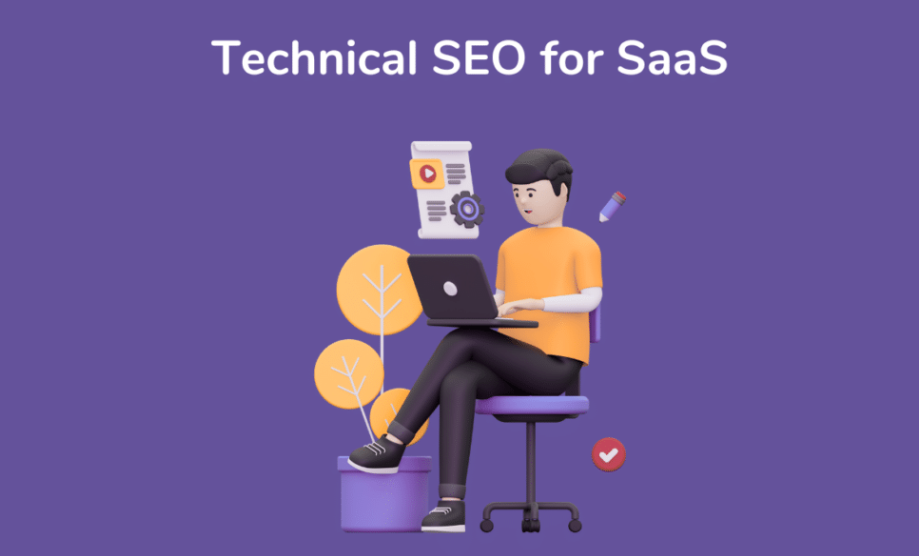
Of course, things like crawlability, indexing, and structural data are as vital as ever, but with a notable addition – User Experience (UX). Is your site friendly to mobile users? (mobile-first indexing) Is it fast and allows a lag-free interface? These are some of the factors that define how well you perform; Core Web Vitals.
Key Technical SEO Elements for SaaS Websites
As you now know, technical SEO is highly valuable for SaaS. Let us look at particular details. Here are the key elements you need to focus on:
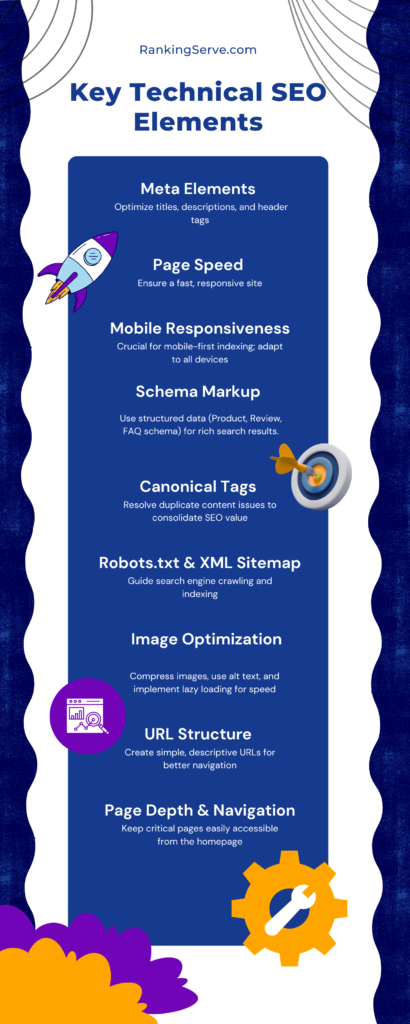
1. Meta Elements: Titles, Descriptions, and Tags
Meta elements can be viewed as an introduction to your website. They are the brief pieces of information that appear on the results pages and have a lot to do with the click-through rate. These elements should incorporate both, the technical side of the SaaS offering and the goals users have when engaging with a service. This means that they must be easy to understand, brief, and specific to search engines and possible customers.
- Page Titles: The title tag of a webpage is one of the most important elements for on-page SEO, and important for user experience as well. It should contain some sort of relevant keywords, such as ‘project management software’, or ‘CRM for small businesses’. It must reflect what the page being written on is all about. It should not be very long so that it cannot be cut off by search engines (preferably under 60 characters).
- Meta Descriptions: A short description of a certain web page’s content, which is used in the list of search results and affects the rate of traffic. They do not help you rank, but they serve as the ads that make people click on your link, thus having a tremendous effect on your organic traffic.

- It is like your 30-second commercial of who you are and what you want to do or your major area of interest. This is the best place to put your benefits statement and make people want to know more about your product/service.
- Header Tags (H1, H2, H3): These tags are useful for your website and make it easier to sort through to both bots and human audiences. H1 should be used for the title of the page, and then subtopics should be divided by H2 and sub-subtopics with H3. It produces a more defined structure and is more easily comprehensible.
2. Page Speed and Core Web Vitals Optimization
In SaaS solutions, there is no room for complacency, and seconds may lead to a significant change in customer satisfaction. Poor download speed is the main reason why users get annoyed and do not complete the desired actions. Last year, Google added Core Web Vitals that track page loading time, interactivity, and the stability of the page as they load, to their list of ranking factors. Here’s how to make sure your site is as speedy as possible:

- Optimize Largest Contentful Paint (LCP): This is basically a measure of the time it takes for the primary content of your page to initiate loading.
- Improve First Input Delay (FID): This metric covers the time that a page takes to react to a user’s actions such as clicking a button or submitting a form.
- Reduce Cumulative Layout Shift (CLS): Have you ever visited a site and items seem to move around the page when the page is being loaded? That’s a bad user experience. To prevent this, make sure that you put your image and video size to ensure proper alignment of the webpage.
3. Mobile Responsiveness and Web Design
Today, owing to modern technology, everyone is using smartphones for the internet. This is one of the reasons why Google employs mobile-first indexing. It means that Google mostly considers the mobile version of your site to rank, so its importance cannot be overemphasized for SaaS companies. It is important to optimize your website to work perfectly on any device.
As with mobile-first indexing becoming the new standard, your SaaS website must be responsive and mobile-friendly. The users’ retention and search engine ranking can be greatly influenced by the speed of a site adapted for mobile devices. One of the ways of doing this is through Follow AMP, which is a framework meant for the development of mobile pages that load fast.

Here’s how to make your SaaS website mobile-friendly:
- Responsive Web Design: This is a must-have! Your website layout should be responsive allowing it to adapt to different devices.
- Fast Mobile Load Times: Even if your site takes more than 3 seconds to load, you are likely to expect a high bounce rate.
- Prioritize Mobile Navigation: SaaS websites contain a large number of pages and features usually.
- Optimizing Viewport: To improve the general usability of the website in the context of mobile applications, adjusting the viewport – the part of a web page that is visible to a user – is particularly important.
Implementation of these tips will guide you to design a mobile experience that is friendly to the users and to the search engines too. This will assist you in increasing the traffic to your site, letting them stay longer and make more conversions.
4. Schema Markup and Structured Data for SaaS
The use of the schema markup assists search engines in identifying the content presented on your SaaS website thus enhancing visibility among the search results. Schema.org is a common collective community working on the definition and promotion of different schemas for structured data on the Internet. Having schemas from Schema.org will allow you to highlight certain sections of the website like product offers, reviews, or costs and prices, and to have the search engine display this content in snippets.
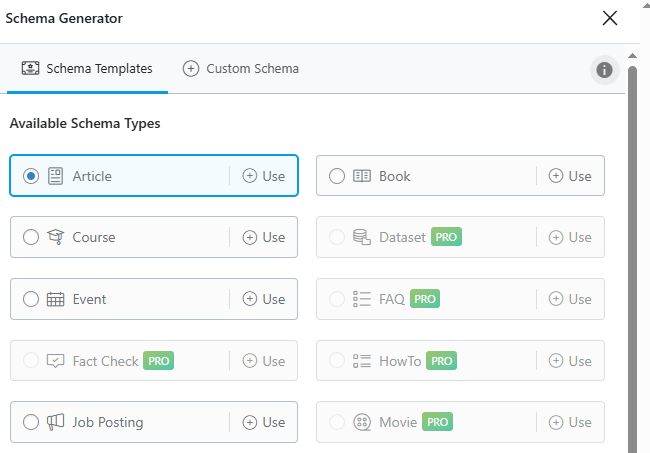
Here’s how to use schema markup effectively:
- Product Pages: Use Product schema on your product pages to provide search engines with specifics about your software or service.
- Reviews: This can be attributed to positive reviews that go a long way. Make use of the Review schema and you be able to capture customer reviews in your listings enhancing the outlook of your listings to be more convincing.
5. Canonical Tags and Duplicate Content Issues
Content Duplication are instance where a sample or similar content appears on a different page thus affecting SEO. It can even complicate things for search engines and weaken your ranking potency. If not solved, it can result in problems of indexing and also distribute the ranking authority of URLs between two portraying the same content.
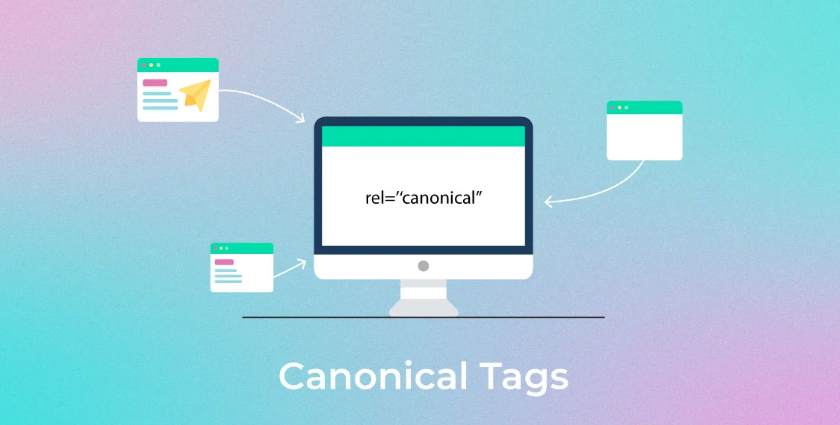
Here’s how to tackle duplicate content:
- Use Canonical Tags: Basically, it can be imagined that the canonical URLs specifically instruct the search engine, “Please pay attention, these pages are quite similar, but this one is the most important.” This assists them to know what version of the page to concentrate on.
- 301 Redirects: When you have pages with duplicate content that is no longer relevant, you should use a 301 redirect to point the obsolete pages and their visitors to the correct pages. This is like saying, “This page has moved permanently, please click here instead.”
6. Robots.txt and Sitemap Optimization
Just as your house has a door that determines who comes in, and a tour that directs the guests to every corner of the house, the robots.txt controls who gets into your site and the sitemap guides them around the site. Both are critical to making certain that search engines can crawl and index your SaaS website effectively.
Robots.txt Optimization
The robots.txt file informs specific bots that access your site; some parts are allowed, while others are prohibited. For a SaaS platform, this is especially critical because you may have such things as admin pages or customer control panels that need to be excluded from indexing.

Sitemap Optimization
XML sitemap is kind of a road map of a website, that helps the search engines get to know the structure of your site as well as will help it to locate all the significant pages. If the SaaS website has a lot of content and it’s a large website, a well-organized sitemap is necessary.

7. Image Optimization: Alt Text, File Size, and Lazy Loading
Web images are useful, but when it comes to site speed – they are one of the most common enemies to beat. In SaaS websites, where the page’s loading time and the user experience determine success, optimizing your images is essential for SEO.
Alt Text Optimization
Alternative text also known as alt text is the text description that is displayed when an image is not loaded. It is useful for accessibility, to help the users understand your content, and it is useful for SEO purposes since it tells search engines what your images are about.
File Size Optimization
Big images take a lot of disk space and essentially slow down your website by taking long periods of time to upload. However, optimizing image size and dimensions without losing quality is the main idea to achieve high loading speed.
Lazy Loading
The concept of lazy loading is that images are not loaded until they are needed, that is, the moment they are clicked. This means that images below the fold i.e. those images of the page that are out of view will not be displayed until the user scrolls to that part of the page.
8. URL Structure Optimization
Appropriate URL structures are more important from both the usability and the SEO point of view. The structure and syntax of URLs utilized on your webpage should be quite simple, straightforward, and indicative of the content of the actual web page. For SaaS websites, it is critical when there are multiple product or feature pages because having the right structure for URLs can only enhance the site’s navigation and indexing.

9. Page Depth and Navigation
The other is the page depth, which is the number of links that a client has to follow until reaching the particular page of interest beginning with the homepage. Extensive page depth, where target web pages are situated at an extensive number of clicks away from the home page, is bad both for users and search engine rankings. For SaaS websites, it is always vital when customers find the critical pages without having to navigate too many clicks away from the landing page, for sales conversions, and search engine optimization.
The SaaS Technical SEO Audit
Inspecting a SaaS site from a technical perspective is a must for any SaaS in order to maintain compliance with the guidelines set forth by the search engines. The inability to follow these guidelines means penalties. penalties are the measures that search engines take against sites for various violations. It may cause such websites to lower their rankings or be deindexed completely.
A technical SEO audit can be thought of as a checkup for your website. It assists you detect various factors that may keep your SaaS platform from ranking in the search engines. The audit will check accessibility for search engines, structured data, page speed, and much more.
Checklist for a SaaS SEO Audit:
- Crawlability: You can use tools such as Screaming Frog or Sitebulb to determine if a website has certain crawl errors.

- Canonicalization: It is the way you pick the preferred version of a URL in case of several available versions. Verify if the canonical tags are used correctly to avoid problems connected with the duplicate content.
- Response Codes: Ensure that your page is returning proper status codes. A 404 (HTTP status that is given to a page not found) needs to be resolved or redirected. A 301 (permanent move from one URL to another while maintaining all the link juice) needs to point to the right page. A 302 (a temporary redirection from one URL to another with no link juice passed) should only be used where the redirection is temporary.
- Robots Meta Tag: The robot meta tag is an HTML tag that tells search engines how to handle a page (for example, “index, nofollow”). For instance, if you do not want a particular page to be indexed, then you can use the no index tag, or if you do not want to pass the link juice on a page use nofollow.
- Page Speed: Check the speed at which your website loads and determine where it can be optimized. Some tools, such as Google PageSpeed Insights are helpful to identify some problems and offer ways to improve the situation.

- Mobile-Friendliness: Check how your website looks on different devices because this will help to confirm whether the design is friendly on mobile and other devices.
- Schema Markup: Find out if you’re using schema markup right so that the search engines can comprehend your content better.
- Security: Make sure that your website is safe, and has the right to SSL certificate. HTTPS- a of HTTP that transmits data with the user and the server encrypted for better security.

Tools for Technical SEO Audits:
- Screaming Frog: This frequently used tool crawls through your website and helps identify SEO problems that include missing metadata, instances of duplicated content, and issues of broken links.
- Ahrefs: An all–in–one SEO software that enables you to assess backlinks, perform website checks, and monitor rankings for any keyword.
- Sitebulb: Another great auditing tool that is capable of giving visual reports which can help in finding and correcting technical issues.
- JetOctopus: This tool is most beneficial when it is used with large SaaS platforms. It can afford to crawl frequently and get comprehensive reports on problems with crawl budget allocation and indexing issues.
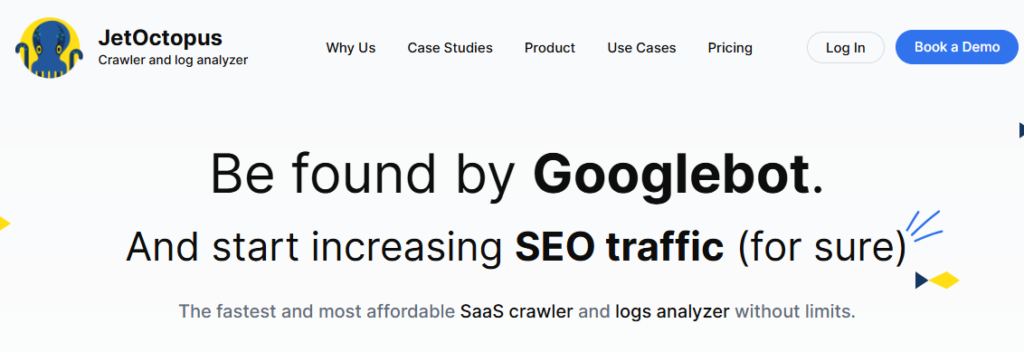
It is necessary to carry out technical SEO audits periodically and use the right tools to observe the condition of a website. Also to know that everything is okay with its optimization for both, search engines and users.
Maximizing On-Page SEO for SaaS
Where technical SEO is about all the processes no one sees, on-page SEO is about making the page more attractive in the search and providing the user with a good experience. In particular, on-page SEO is crucial to the success of SaaS platforms for bringing in traffic keeping the visitors engaged, and converting them into paying customers.
So, while on-page SEO is all about the specific components of your website, it is worthwhile understanding that Off-Page SEO also has significant influence on your website’s position in the search engines. Techniques that come within the Off-Page SEO include link building, social media marketing, and brand awareness. These techniques assist in promoting your SaaS platform and building credibility in SERP.
It is important for you, however, to understand that while your primary work will be performed through technical SEO and on-page optimization, you need to ensure that off-page SEO techniques are equally well done if you hope to be successful in the long term. Link building is an effective kind of off-page optimization; the opportunity to gain credible backlinks from reliable sites. It will add more credibility to your site and positively affect ranking indicators.
Best Practices for SaaS Landing Pages and Product Pages
The first point of interaction that a potential customer has with your SaaS offering is your landing pages and the product pages. However, these pages should be optimized both for the search engine and for the user, as well. Unlike most SaaS platforms where the market is mostly general, local SEO can work, especially if your SaaS company operates in some particular areas. Local SEO can be defined as optimization activities targeting local search rankings; this is beneficial, especially for SaaS businesses in which offerings are localized, such as being provided in certain cities, areas, or countries.

Key On-Page SEO Strategies for SaaS.
- Content Depth: To enhance on-Page SEO, one of the most important factors is the thin content which is a page that has little or no content on it is bad for ranking. Landing pages or product pages for SaaS businesses that do not offer much information or lack sufficient detailed info on the product lead to low traffic or ranked positions on Search Engine Result Pages.
- User-Centric CTAs: The CTAs need to be strong in order for the lead to convert to a sale. Be sure to create clear, persuasive, and easily visible Call To Action (CTAs). Don’t use passive terms such as ‘Sign Up’ instead, try using calls to action such as ‘Start Free Trial.’
- Internal Linking: Link to other content on your site, such as blog entries, examples of work, or the pricing section. This aids the users to navigate better and it distributes link juice (SEO credit) throughout your site.
- Hreflang Tags: When it comes to B2C SaaS platforms that are targeting users from different countries or speaking different languages, Hreflang tags are necessary. Hreflang tags are HTML tags that can be used to inform search engines regarding the language and/or regional relevance of certain Web pages.
- Long-Tail Keywords: To ensure that you get quality traffic visit your website focus on long-tail keywords specific to the SaaS industry. They are longer and highly specific, actual keyword phrases that people use to look for specific solutions.

- Breadcrumb Navigation: One of the key aspects of on-page SEO which helps in enhancing usability and SEO, is the application of breadcrumb navigation. Breadcrumb navigation is a graphical control element that is used to indicate the user’s location in the website hierarchy. It helps them to know where on your site they are, and how they may get back to the previous section.
Optimizing Content for SaaS: Keywords, Internal Linking, and User Experience
When it comes to the SaaS business model, content is undoubtedly one of the most critical assets for turning website visitors into customers. However, that content should not only be tailored for target keywords but user experience and Latent Semantic Indexing (LSI) as well.
LSI refers to the way that Search Engines interpret the context of your content to other terms, rather than specific keywords. For SaaS websites, using LSI means that your content becomes relevant to the longer tail keywords which in turn leads to greater visibility.

It is crucial not to focus excessively on the keywords that are relevant to your SaaS website since they can lead to keyword cannibalism,—where multiple pages in your website fight for the same keyword rank. This can lead to uncertainty concerning which page should be prioritized to be ranked for a specific keyword, which in turn can affect the SEO negatively.
Focus on Semantic SEO for SaaS:
In the context of semantic search which is topical now, it is infeasible to focus on certain keywords only. Semantic search is a way to search for something based on the sense behind the query entered by a user. This means for SaaS websites, search engines will no longer just consider the word-for-word match of the keyword with the content on the website.
- Semantic SEO is the practice of offering the most complete answer to a user query. This means moving on from the mere practice of matching words and key phrases and concentrating more on the concepts and relevance of posted content. This can raise the chances for the content you practice on to appear in either rich snippets or Google Knowledge Graphs.

- Featured Snippets: Organize your content in a format that provides answers to questions upward, from basic to specific. This also improves the probability of getting to the Google ‘featured snippets’ – the highlighted answer at the top of the SERP page.
- Content Structure: Subdivide your content into sections with proper subheadings (H2 and H3). Make text consisting of bullets, numbers, and tables whenever possible to make content easier to read.
- User Experience: The information is required not only to be relevant but also easy to navigate. Simplify your design, make it clear, and ensure your content will load as quickly as possible on any device. It is easier to convince a customer to act if they find the information presented in an organized and simple manner.
Technical SEO Tools for SaaS
If you want your SaaS website to be in tip-top shape, then you need the right tools. Consider them as valuable tools that allow you to identify issues as well as improve your site for rankings. Below you’ll find a list of particular tools that are more valuable for successful SEO audits of SaaS and constant tracking of its performance.
Essential Tools for SEO Audits, Tracking, and Optimization
Measuring and building backlinks is important for managing and optimizing SaaS website SEO. This means the backlink profile is the sum of total backlinks pointing to your site which is crucial in influencing your site’s authority and ranking. Having the high quality and relevancy of these backlinks will play a big role in the success of your SEO campaign.
The following tools are your go-to for auditing and optimizing your SaaS website:
- Screaming Frog: This tool is somewhat like a search engine crawler as it goes over your whole website. It reveals technicalities such as the presence of broken links, missing or misplaced meta descriptions, and duplicate content. It also tells you the extent to which your site has been indexed by search engines.
- Ahrefs: Overall, Ahrefs is an incredible tool for backlinking but is equally exceptional for conducting SEO audits. That enables you to know how your site is doing, if there are errors with crawling, and your ranking for the keywords.
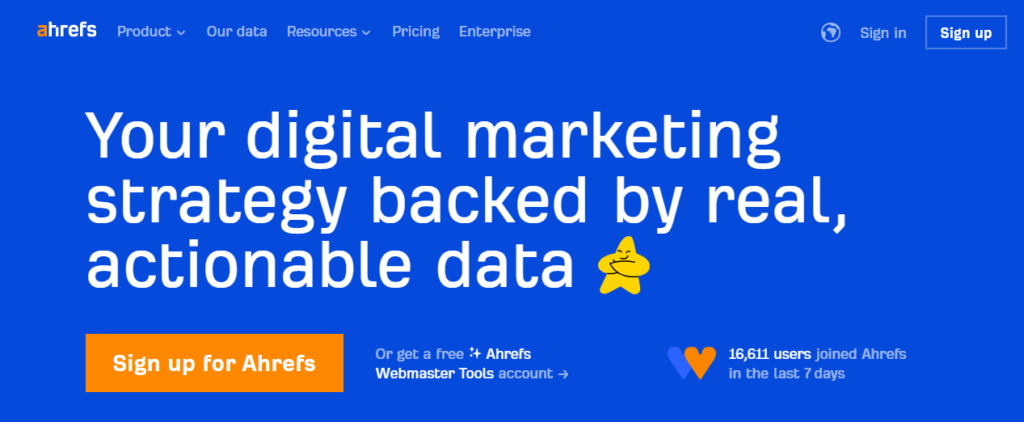
- JetOctopus: For very large SaaS platforms, JetOctopus is perfect for tracking crawl budgets, indexing problems, and checking critical pages for crawling.
- Sitebulb: The technical SEO audit becomes easier with Sitebulb because it provides visual reports. It identifies problems such as slow speeds, mobile usability concerns, or crawl issues, and then it becomes easy to solve them.
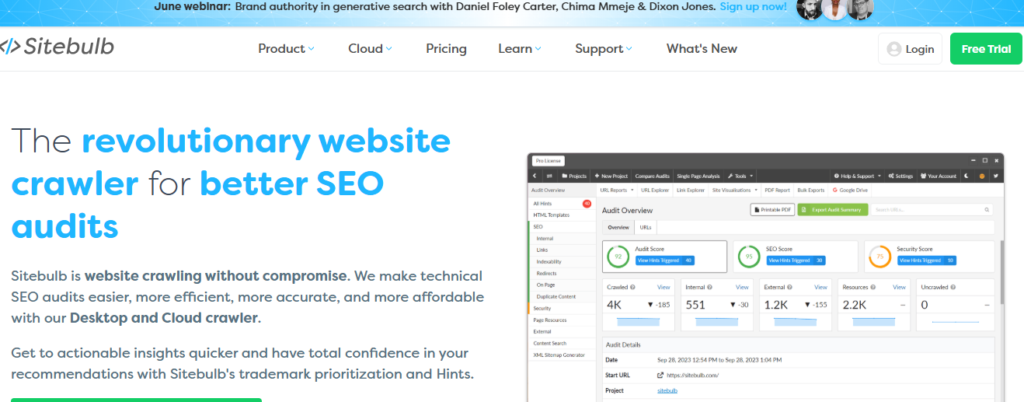
Search engine optimization is an important part of any online marketing campaign, and so are the SEO tools for any online marketing expectations.
How to Use SEO Tools Effectively
Each tool has its own strengths, so it’s important to use them strategically:
- Crawling: To identify technical problems like broken links or wrong canonical tags implement regular site crawls with tools like; Screaming Frog. Make this a routine part of your SEO processes.
- Backlink Monitoring: Track your backlink profile using Ahrefs. Backlinks originating from high-quality web sources mean that others have confidence in your website’s information and content thus improving your domain reputation. Ahrefs lets you monitor not only your backlinks but also link-building opportunities and your competitors’ backlinks.
- Indexing and Crawl Budget: If you have a large SaaS website or have a complicated structure or a lot of content that changes often, it’s wise to think about crawl budgeting. JetOctopus can show you how effectively search engines index your site and where indexing issues may be.
- Technical Audits: Compared to other solutions, technical audits with Sitebulb are easy because they identify problems such as response code errors, Core Web Vitals, and schema markup implementation. With an intuitive interface, it becomes very simple to arrange the fixes in accordance with their effectiveness for the SEO process.
Technical SEO FAQs for SaaS
Introducing FAQ on your SaaS website benefits both the users and the search engines: Here are the reasons. This is useful to answer frequently asked questions, enhance your website’s search engine rank, and give the customer a much better experience. Research shows that having FAQ schema contributes to your search visibility at such a rapid pace.

Benefits of Adding FAQs
- Featured Snippet Optimization: Google takes FAQs as the featured snippets, which are those square boxes that sit at the top of the SERPs. This puts your website in the most strategic position and visibility is very good.
- Improved User Experience: FAQs save users time as they allow one to search for answers to regular questions without searching for them or speaking to support. This engages them and prevents bounce rates, where people briefly visit your site, but quickly leave.
- Internal Linking Opportunities: The benefit of using FAQs is that you can use them to provide links to other pages of your site such as the product page, blog, or case studies. This increases the crawlability of the site and directs the user to other useful information. The use of internal links in an FAQ section can go a long way towards increasing link juice, or the amount of value transferred from one page to another through links.
Finding Good FAQs
- Customer Queries: Focus on those questions, which your customer support receives most frequently. These are the questions asked by the potential customers
- SEO Tools: When it comes to finding more question-based related keywords to your SaaS offering, tools such as AnswerThePublic and Ahrefs are quite helpful.
- Competitor Research: To get an idea as to what you should include in your FAQ section, check your competitors but do not use their content since it will not offer any real value to your clients.
Internal Linking Opportunities
Incorporating an FAQ page not only improves usability but also means there are new internal linking points. When creating anchor text—the clickable text in a hyperlink that explains the context of the linked page—it’s essential to use relevant keywords that reflect the content of the final page. This makes not only users but also search engines aware of the context of the link, thereby increasing the SEO value of the linked content.
- Link to Key Pages: Include your frequently asked questions on the web pages by providing links to such pages as the pricing page features page or blog articles.
- User Journey: Make sure to take users on a useful and logical path by providing links to other pages. In other words, if a particular person is asking questions such as; what is this particular product? Where is this product made? or is this product available in the market; the reply should contain a link to the particular product’s description page.
Final Thoughts
Technical SEO is not an option anymore in the world of SaaS competition, it has become essential. If your site is well-optimized in terms of speed, organization, and responsiveness to mobile devices, you ensure that search engines can read and index your information aptly.
This results in more visibility, more visitors, and, of course, more customers in the case of business organizations. Technical issues can indeed become a significant problem for various software application solutions, especially those that are SaaS-based.
Make the right investments in the strategies and tools for a strong foundation to build a successful online business. Are you ready to get the best from your SaaS website? Call a technical SEO consultant to discuss your project needs and schedule an evaluation and a specific set of recommendations.
